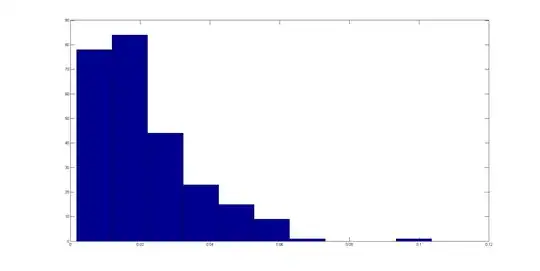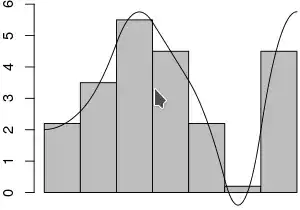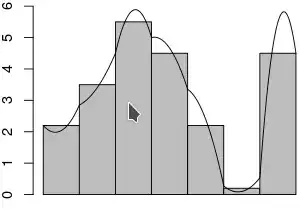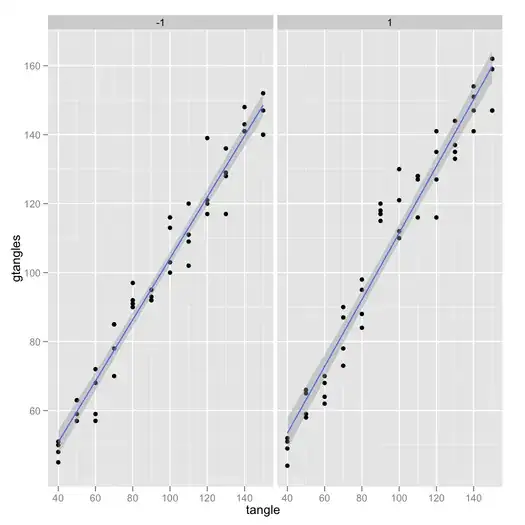Say I have this binned data as input. The average value $\bar{y}_i$ is given for each successive $\Delta x_i$ interval. For simplicity, let's assume sampling density is uniform within each bin.
Now I want to estimate the underlying function $y$($x$) i.e. I want to be able to get reasonable estimates of $y$ for arbitrary, punctual values of $x$ (e.g. $x$ = 2.3 or 2.5 or whatever). The requirement are:
- The function must preserve the average over each bin, $\overline{y(x)}_i = \bar{y}_i$, so as to not introduce bias
- The function must be continuous (i.e. no discontinuities)
- The function must be non-negative. (Negative values are unphysical.)
Simply looking up the bin value for a given $x$ would satisfy #1, but violate #2 (there are discontinuities at all bin edges).
On the other hand, assigning the entire bin weight to each bin center, and then interpolating between those points, satisfies #2, but violates #1 (regardless of whether it's linear or higher-order spline interpolation). In the illustration below, the 2<$x$<3 bin average is not preserved; it is reduced, as both corners get cut downward.
How can this be done in a way that satisfies both requirements?
Also, what is this operation called? Is this interpolation? (Not sure how to tag this question.)



